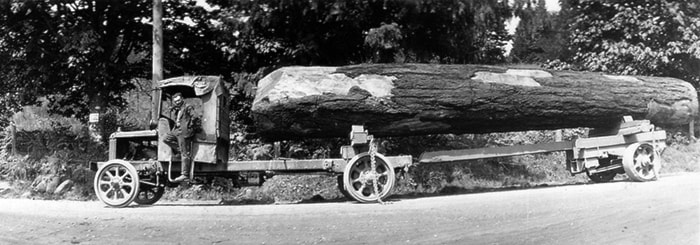That much of the land in Whonnock and Ruskin today is part of the Agricultural Land Reserve may create the impression of a long farming history.
Today there is no evidence of any major commercial farming going on here.
Was that different in the past?
“Farming here is still in its childhood; a number have cleared a few acres; some have done almost nothing,” writes one of the Norwegian settlers from Whonnock in 1897.
It took, as the writer suggests, “claws like a bear and the strength of a Samson” to clear even a patch of land large enough “to support a cow and a hen.”
As there was not yet a market for produce or fruit, those early settlers did not need much farmland. They grew just enough to feed themselves and their families. They logged their trees to build their homes, barns and boats. They used wood to cook their meals, to heat water for laundry, a bath, or a warm drink and to keep a fire burning during the wet and cold wintry days.
Wood was also a product they could sell. Firewood was needed by the paddle wheelers steaming up and down the river and for the locomotives pulling trains through the Fraser Valley and beyond.
There was also an endless demand for railway sleepers or ties, supporting the rails on the railway bed.
Deforestation started on the slopes nearest to the river, but the demand for building materials rapidly increased as in the 20 years after the railroad started running across Canada, the population of B.C. grew quickly.
The appetite for lumber of the new city of Vancouver, founded in 1886, was insatiable. In the beginning, logging was usually a one-man job, aided by a horse or an ox. But in major logging operations, steam donkeys soon replaced oxen and horses.
As stands of easy to access trees were soon depleted, narrow-gauge railway was used to take the giant logs from the hinterland to the water’s edge. Only the introduction of logging trucks after the First World War gave the industry the tool to log trees all over the area. Today there is no first-growth forest left in Whonnock or Ruskin.
The rapid increase of consumers in the cities did not turn Whonnock or Ruskin into farming communities. After having logged off their properties, most owners of large acreage did not even bother to remove the stumps. Some settlers grew fruit, mostly apples, for the market. But in general attempts at commercially farming were few and unsuccessful.
That changed with the arrival of Japanese settlers. In the 1920s and 1930s, they turned large areas of land covered by bush and stumps into productive farms. It took an unbelievable commitment to clear the land and grow large commercial harvests of soft fruit – mainly strawberries. And so it happened that for a few decades, Whonnock and Ruskin emerged as prime agricultural areas. That ended in 1942 with the internment of B.C.’s Japanese population.
We may have now the “claws of the bear” and “strength of Samson” that our ancestors could only dream of – chain saws and other power equipment – but the area has remained mainly residential. Much in evidence are pastures for riding horses or making hay.
Like those before us, some residents have a vegetable garden or grow a few fruit trees, keep a few chickens or one or two heads of cattle. But it would be a far stretch to call Whonnock and Ruskin farming communities.
– By Fred Braches, a local historian who lives in Whonnock.
